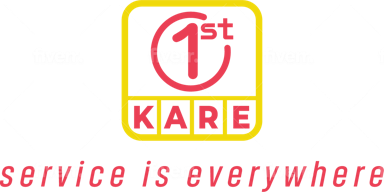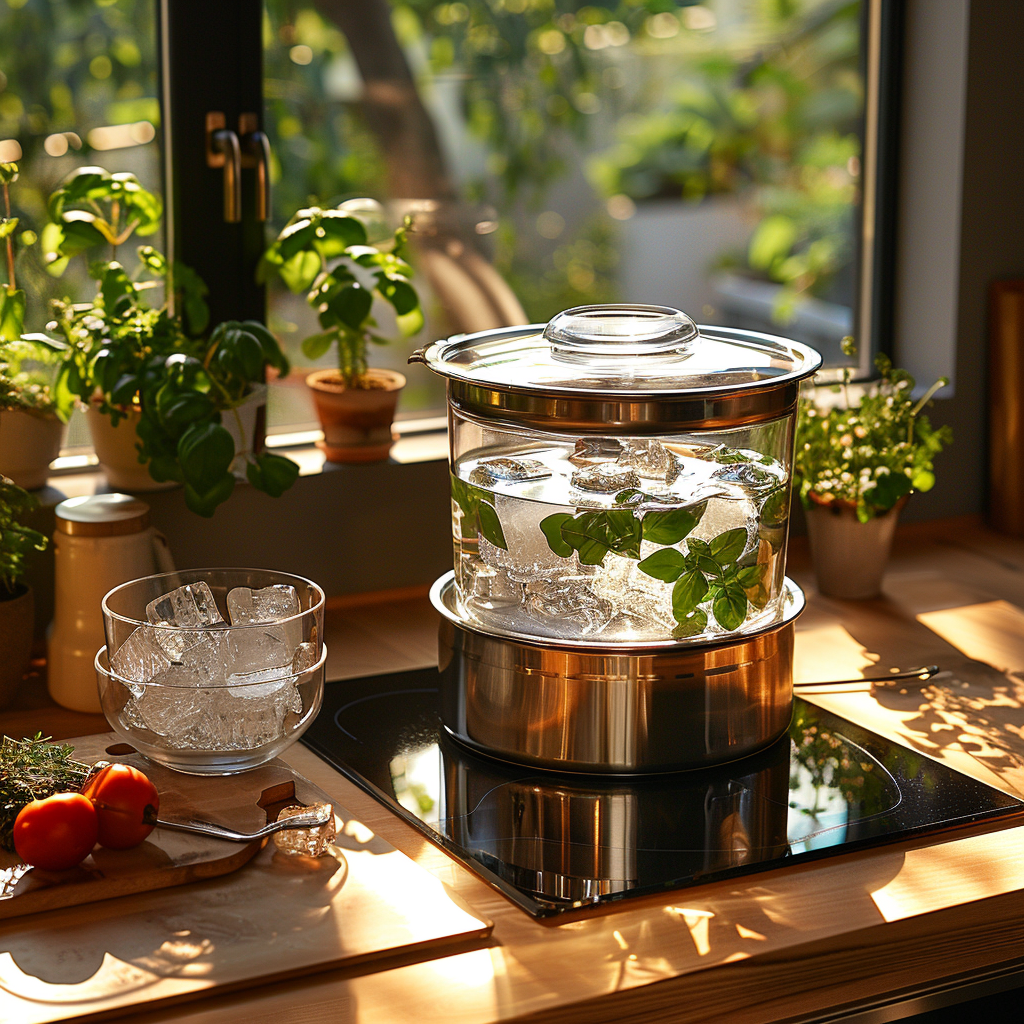
Introduction
In the tranquil dawn of a new day, the golden rays of the sun gently illuminate a world brimming with untapped potential. Amidst this serene backdrop, a pressing question emerges, echoing through the corridors of our collective consciousness – how can we, as stewards of this planet, forge a path towards a more sustainable future, starting within the very walls of our homes?
Sustainable living, a term that resonates with increasing urgency in our environmentally-conscious society, is not just a concept but a call to action. It’s about reimagining and reshaping our daily lives in harmony with nature. This journey begins in the intimate spaces of our homes, where small yet impactful changes have the power to ripple outwards, contributing to a larger global effort.
As we find ourselves navigating the complexities of the 21st century, the necessity for sustainable practices has never been more evident. Climate change, resource depletion, and a growing awareness of our ecological footprint have sparked a global movement towards environmental stewardship. Our homes, often seen as personal sanctuaries, have a pivotal role to play in this movement. They are not just spaces for comfort and security but also platforms for environmental change.
In the following sections, we will delve into the heart of sustainable living, uncovering innovative solutions that blend modern technology with time-honored practices. From harnessing the power of renewable energy to rethinking our water and waste management strategies, these solutions are more than mere adjustments – they are transformative actions that redefine our interaction with the environment.
This exploration is not just about equipping our homes with the latest eco-friendly technologies; it’s about cultivating a mindset that embraces sustainability as a way of life. It’s a journey that invites us to reconsider our daily choices, challenging us to live in ways that respect and replenish the natural world.
As we embark on this journey together, let us envision a future where each home becomes a beacon of sustainability – a testament to the power of collective action and the enduring spirit of hope for a greener, more sustainable world.
The Need for Sustainable Living
In an age where the whispers of the Earth grow louder with pleas for care, the need for sustainable living becomes not just a choice but a necessity. As we stand at the crossroads of environmental consciousness, the question looms large: Why must we pivot towards a lifestyle that harmonizes with nature? The answer lies not only in the urgency of our planet's cries but also in the legacy we aspire to leave for future generations.
The Stark Reality of Environmental Challenges
- Climate Change: Our planet is experiencing unprecedented changes in climate patterns, largely driven by human activities. Rising temperatures, melting ice caps, and erratic weather phenomena serve as harbingers of a future where the balance of nature is profoundly disturbed.
- Resource Depletion: The relentless consumption of natural resources – from fossil fuels to water and forests – is leading us down a path of scarcity. As these resources dwindle, the necessity to adopt sustainable practices becomes glaringly apparent.
The Impact of Household Activities
- Carbon Footprint: Every household leaves an environmental footprint. From the energy we consume to the waste we generate, our daily actions significantly impact the planet’s health.
- Water Usage and Waste: The way we use water and manage waste in our homes has far-reaching effects on local ecosystems and global environmental health.
A Collective Call to Action
- Empowering Individual Contributions: The path to sustainability is paved with the actions of individuals. Each choice to reduce, reuse, and recycle is a step towards a sustainable future.
- The Ripple Effect: When individuals adopt sustainable practices, they inspire communities, which in turn can influence cities, nations, and eventually, the global landscape.
A Vision for a Sustainable Future
- Harmony with Nature: Sustainable living is about creating a life that exists in harmony with the natural world, respecting its cycles and preserving its beauty and diversity for the generations to come.
- A Legacy of Stewardship: By choosing sustainability, we choose to be guardians of the Earth, committing to a lifestyle that prioritizes the planet's health and well-being.
Core Areas of Sustainable Home Solutions
As we delve into the realm of sustainable living, it's essential to focus on the core areas where impactful changes can be made within our homes. These areas represent the pillars of sustainable home solutions, each playing a vital role in forging a path toward a more eco-friendly and conscientious lifestyle. Let's explore these key areas:
1. Energy Efficiency: The Power to Change
- Renewable Energy Sources: Embracing solar panels, wind turbines, and other renewable energy technologies to power our homes sustainably.
- Energy-Efficient Appliances: Investing in appliances with high energy efficiency ratings to reduce electricity consumption and lower carbon emissions.
- Smart Home Technologies: Utilizing smart thermostats, LED lighting, and energy management systems to optimize home energy use.
2. Water Conservation: Every Drop Counts
- Low-Flow Fixtures: Installing low-flow toilets, showerheads, and faucets to significantly reduce water usage.
- Rainwater Harvesting: Implementing systems to collect and reuse rainwater for gardening and other non-potable uses.
- Sustainable Landscaping: Adopting xeriscaping and other water-efficient landscaping techniques to minimize outdoor water consumption.
3. Waste Reduction: Towards a Zero-Waste Lifestyle
- Composting and Organic Waste Management: Turning kitchen scraps and yard waste into compost to enrich the soil and reduce landfill waste.
- Recycling Systems: Setting up effective recycling systems to manage and minimize household waste.
- Mindful Consumption: Choosing products with minimal or sustainable packaging and reducing reliance on single-use plastics.
4. Building and Designing for Sustainability
- Green Building Materials: Using eco-friendly and recycled materials in home construction and renovation projects.
- Energy-Efficient Design: Incorporating design elements like proper insulation, natural lighting, and passive solar heating to enhance energy efficiency.
5. Indoor Environmental Quality: Health and Comfort
- Natural Cleaning Products: Using environmentally-friendly cleaning products to reduce indoor air pollution.
- Indoor Plants: Improving air quality and overall well-being through the use of indoor plants.
Building and Designing Sustainable Homes
In the quest for a more sustainable future, the way we build and design our homes plays a pivotal role. Sustainable home design goes beyond mere aesthetics; it involves integrating eco-friendly practices and materials to create spaces that are not only energy-efficient and comfortable but also in harmony with the environment. This section delves into the key aspects of building and designing sustainable homes:
1. Sustainable Building Materials: Foundations of Eco-Friendly Construction
- Eco-Friendly Materials: Utilizing materials that are renewable, recycled, or have a low environmental impact, such as bamboo, reclaimed wood, and recycled metal or glass.
- Local Sourcing: Reducing the carbon footprint associated with transporting materials by sourcing them locally.
2. Energy-Efficient Design: Maximizing Natural Resources
- Passive Solar Design: Orienting and designing homes to take advantage of the sun’s natural heat and light, reducing reliance on artificial heating and lighting.
- Natural Ventilation: Implementing design elements that enhance airflow and reduce the need for air conditioning.
3. Insulation and Energy Conservation
- Effective Insulation: Using high-quality insulation materials to maintain indoor temperatures, thereby reducing energy consumption for heating and cooling.
- Energy-Efficient Windows and Doors: Installing double or triple-glazed windows and well-sealed doors to prevent heat loss.
4. Water Efficiency and Management
- Water-Saving Fixtures: Incorporating fixtures that reduce water use, such as dual-flush toilets and low-flow showerheads.
- Greywater Systems: Implementing systems to recycle greywater for non-potable uses like irrigation and flushing toilets.
5. Integrating Renewable Energy Sources
- Solar Panels: Installing solar panels to harness solar energy for electricity and heating.
- Other Renewable Technologies: Exploring options like geothermal heating and cooling systems and wind energy, depending on the geographic location and feasibility.
6. Sustainable Landscaping: Harmonizing with the Environment
- Native Planting: Using native plants in landscaping to reduce water usage and support local ecosystems.
- Permeable Paving: Implementing permeable paving materials to improve drainage and reduce runoff.
7. Smart Home Technologies for Sustainability
- Automation for Efficiency: Utilizing smart home technologies to automate lighting, heating, and cooling systems for optimal energy use.
- Monitoring and Management: Implementing systems that monitor and manage energy and water usage, helping homeowners to understand and reduce their consumption.
Sustainable Lifestyle Practices
Embracing a sustainable lifestyle goes beyond implementing green technologies and materials in our homes. It's about cultivating daily habits and practices that reflect a commitment to environmental stewardship. This holistic approach to living not only lessens our ecological footprint but also enhances our quality of life. Let's explore various sustainable lifestyle practices that can be incorporated into our daily routines:
1. Conscious Consumption and Minimalism
- Mindful Shopping: Making informed choices about purchases, prioritizing products that are eco-friendly, ethically made, and durable.
- Embracing Minimalism: Reducing consumption and clutter by embracing a minimalist lifestyle, focusing on the essentials and avoiding unnecessary accumulation of items.
2. Energy Conservation in Daily Life
- Reducing Energy Usage: Being mindful of energy consumption, such as turning off lights when not in use, using energy-efficient appliances, and minimizing the use of heating and air conditioning.
- Green Transportation Choices: Opting for public transport, carpooling, biking, or walking instead of driving individual vehicles.
3. Waste Reduction and Responsible Disposal
- Reducing Waste: Minimizing waste generation by choosing reusable products over disposable ones and avoiding single-use plastics.
- Proper Recycling: Following local recycling guidelines to ensure materials are properly sorted and disposed of.
4. Sustainable Food Choices
- Eating Locally and Seasonally: Supporting local agriculture by purchasing locally grown, seasonal produce, which often requires less transportation and packaging.
- Reducing Meat Consumption: Considering a plant-based diet or reducing meat consumption, as livestock farming has a high environmental impact.
5. Water Conservation
- Mindful Water Usage: Conserving water through simple actions like fixing leaks, taking shorter showers, and using water-efficient appliances.
- Sustainable Gardening: Practicing water-wise gardening techniques, such as mulching and drip irrigation.
6. Community Engagement and Advocacy
- Supporting Green Initiatives: Participating in community programs focused on sustainability, such as tree planting, clean-up drives, and educational workshops.
- Advocating for Sustainability: Raising awareness and advocating for environmental policies and practices within the community.
7. Continuous Learning and Adaptation
- Staying Informed: Keeping abreast of environmental issues and sustainability practices through continuous learning and research.
- Flexibility to Adapt: Being open to adopting new sustainable practices and technologies as they become available.
Technology and Innovation in Sustainable Living
In the pursuit of a more sustainable future, technology and innovation play a transformative role. They provide powerful tools and approaches that can significantly reduce our environmental impact while enhancing our quality of life. This section explores how cutting-edge technologies and innovative solutions are shaping the landscape of sustainable living:
1. Smart Home Technologies
- Automated Energy Management: Systems that optimize energy use in real-time, adjusting heating, cooling, and lighting based on occupancy and preferences.
- Intelligent Water Systems: Technologies for monitoring water usage, detecting leaks, and efficiently managing water resources in homes.
2. Renewable Energy Innovations
- Advancements in Solar Power: Innovative solar panel technologies, including flexible and integrated solar solutions that are more efficient and aesthetically pleasing.
- Wind and Geothermal Energy: Emerging home-scale wind turbines and geothermal systems providing alternative renewable energy sources.
3. Sustainable Building Techniques
- Green Construction Materials: Development of eco-friendly building materials like self-healing concrete, and bio-bricks made from natural materials.
- 3D Printing in Construction: Utilization of 3D printing for constructing homes with reduced waste and lower carbon footprint.
4. IoT and Home Automation
- Connected Appliances: IoT-enabled appliances that provide greater control over energy usage, maintenance, and efficiency.
- Smart Gardening Systems: Automated systems for sustainable gardening, including sensor-based irrigation and plant health monitoring.
5. Eco-Friendly Transportation Solutions
- Electric Vehicles (EVs): Advances in EV technology, including improved battery life and expanded charging infrastructure.
- Integration with Smart Grids: EVs integrated with smart home systems and energy grids for optimized energy usage and storage.
6. Waste Management Technologies
- Composting Innovations: High-tech composting solutions that make organic waste management easier and more efficient.
- Recycling Apps and Platforms: Digital platforms that facilitate recycling and responsible disposal of goods.
7. Water Conservation and Management
- Smart Water Sensors: Devices that monitor water quality, usage, and provide data for efficient water management.
- Greywater Recycling Systems: Advanced systems for reusing household greywater in landscaping and other non-potable applications.
8. Emerging Trends in Sustainable Tech
- AI for Sustainability: AI algorithms that optimize resource use in homes and predict environmental patterns for better sustainability planning.
- Biophilic Design Technologies: Integration of nature into architectural design, using technology to create living, responsive environments.
Challenges and Considerations
While the shift towards sustainable living is essential for our planet’s future, it is not without its challenges and considerations. These hurdles range from practical and financial constraints to behavioral and societal factors. Understanding and addressing these challenges is crucial for the successful adoption and implementation of sustainable practices. Let's explore some of the key challenges and considerations:
1. Cost and Affordability
- Initial Investment: Many sustainable technologies and solutions, like solar panels or high-efficiency appliances, require an initial investment that can be cost-prohibitive for some individuals and families.
- Long-Term Savings vs. Short-Term Costs: Balancing the upfront costs with long-term savings and environmental benefits can be challenging for homeowners.
2. Accessibility and Availability
- Access to Sustainable Options: In some regions, access to sustainable materials, technologies, and resources can be limited.
- Urban vs. Rural Challenges: The availability and practicality of certain sustainable solutions can vary significantly between urban and rural areas.
3. Knowledge and Awareness
- Lack of Information: There can be a lack of awareness or misinformation about sustainable practices and their benefits.
- Educational Resources: Providing accessible education and resources to help individuals make informed decisions about sustainable living is crucial.
4. Technological Limitations
- Emerging Technologies: Some sustainable technologies are still in the developmental stage and may not be as efficient or reliable as needed.
- Dependency on Traditional Systems: Transitioning from traditional systems to newer, sustainable options can be complex and gradual.
5. Behavioral and Cultural Shifts
- Changing Habits: Adopting sustainable practices often requires significant changes in lifestyle and habits, which can be difficult to achieve.
- Cultural Resistance: In some cases, there may be cultural or societal resistance to adopting new practices or technologies.
6. Regulatory and Policy Frameworks
- Government Policies: The lack of supportive government policies and incentives can hinder the adoption of sustainable practices.
- Building Codes and Regulations: In some areas, building codes and regulations may not yet support or encourage sustainable construction practices.
7. Environmental Trade-offs
- Complexity of Choices: Some sustainable solutions may have environmental trade-offs that need to be carefully considered.
- Life Cycle Analysis: Understanding the full environmental impact of products, from production to disposal, is necessary for truly sustainable choices.
8. Technological Integration
- Integrating New with Old: Seamlessly integrating new sustainable technologies with existing home systems can be a technical challenge.
Conclusion
As we conclude our exploration of "Sustainable Living: Innovative Home Solutions for a Greener Future," it's clear that the journey towards sustainability is both necessary and enriching. Despite the challenges and considerations, the shift towards eco-friendly living presents a hopeful and actionable path towards a healthier planet and a more harmonious way of life.
The Promise of Sustainability
- A Healthier Planet and People: Sustainable living not only benefits the environment but also enhances our personal well-being, offering cleaner air, water, and a healthier lifestyle overall.
- Economic and Environmental Harmony: While there are upfront costs, the long-term economic and environmental benefits of sustainable practices promise a more cost-effective and resource-efficient future.
The Power of Individual Action
- Collective Impact of Individual Choices: Each small step towards sustainability, whether it’s reducing energy consumption, mindful recycling, or supporting renewable energy, contributes to a larger, collective impact.
- Empowerment Through Knowledge: Educating ourselves and others about sustainable practices empowers more people to make informed decisions and take meaningful action.
The Role of Innovation and Technology
- Technological Advancements: Continuous innovations in green technology are making sustainable solutions more accessible, efficient, and integrated into our daily lives.
- Adaptation to Changing Technologies: As technology evolves, so too must our approach to incorporating these advancements into sustainable living practices.
Looking Ahead
- A Vision for the Future: The vision of a sustainable future is one where homes and communities are in harmony with nature, where resource conservation and environmental responsibility are ingrained in every aspect of living.
- Ongoing Commitment: The journey towards sustainable living is ongoing. It requires a commitment to learning, adapting, and evolving our practices to meet the challenges of our changing world.
Additional Resources
Additional Resources
To further empower your journey towards sustainable living and deepen your understanding of eco-friendly practices, we’ve compiled a list of valuable resources. These resources offer a wealth of information, inspiration, and practical guidance to support your commitment to a greener lifestyle:
Books and Publications
- "Sustainable Home: Practical Projects, Tips and Advice for Maintaining a More Eco-Friendly Household" by Christine Liu
- A comprehensive guide to creating a sustainable and eco-friendly home.
- "The Upcycle: Beyond Sustainability - Designing for Abundance" by William McDonough & Michael Braungart
- Explores concepts of sustainable design and circular economy.
- "Green Housekeeping" by Ellen Sandbeck
- Offers tips and tricks for maintaining an environmentally friendly home.
Websites and Online Platforms
- TreeHugger (treehugger.com)
- A leading media outlet dedicated to driving sustainability mainstream.
- The Green Living Guy (greenlivingguy.com)
- A blog about green living, eco-friendly products, and sustainability.
Documentaries and Films
- "An Inconvenient Truth" and "An Inconvenient Sequel: Truth to Power"
- Documentaries focusing on climate change and environmental activism.
- "Before the Flood"
- A documentary film that presents a riveting account of the dramatic changes occurring around the world due to climate change.
Online Courses and Educational Platforms
- Coursera (coursera.org)
- Offers courses like "Introduction to Sustainability" and "Our Earth: Its Climate, History, and Processes".
- Udemy (udemy.com)
- Provides a variety of courses on sustainable living and green building practices.
Apps and Tools
- JouleBug (joulebug.com)
- An app that makes sustainable living fun with gaming and social elements.
- Good On You (goodonyou.eco)
- Provides ethical ratings for clothing brands, helping you make sustainable fashion choices.
Community Groups and Forums
- Local Environmental Groups
- Joining local environmental groups or forums can provide community support and resources for sustainable living.
- Online Forums like Reddit’s r/Sustainable and r/GreenLiving
- Online communities for sharing information, tips, and experiences related to sustainability.







